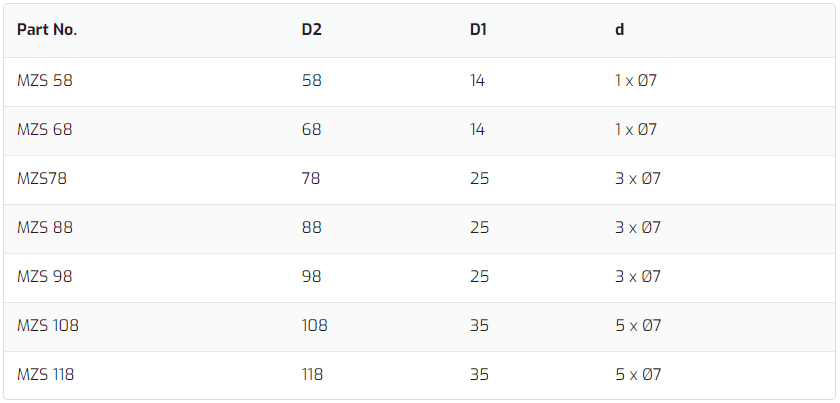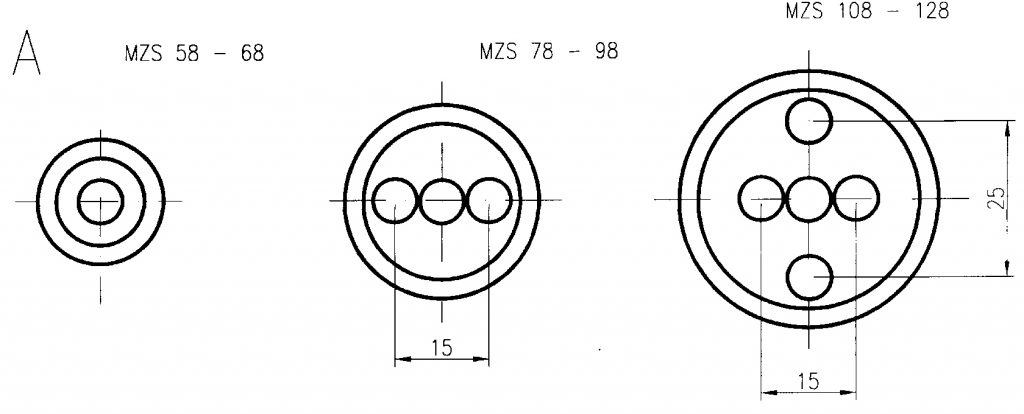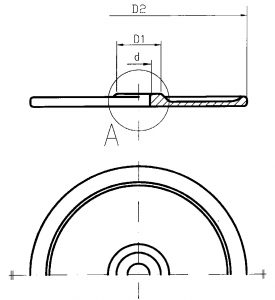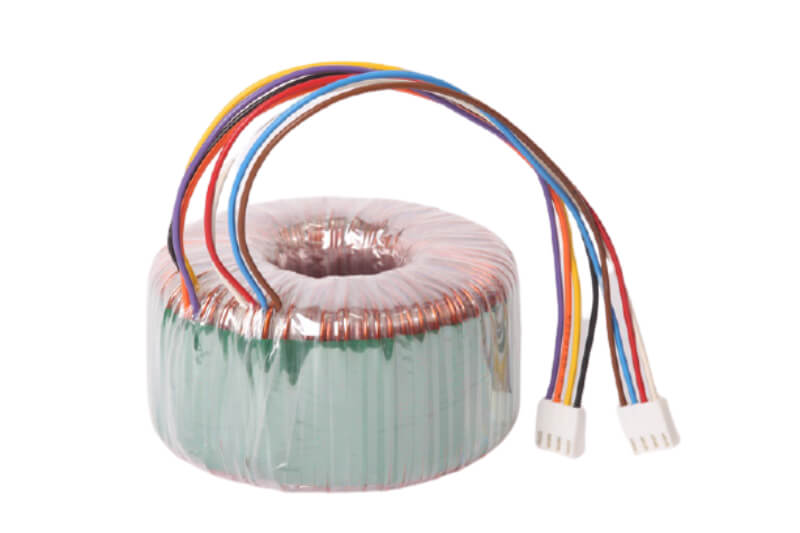Toroidal transformers
Benefits of toroidal transformers
Toroidal transformers are a special type of transformer in which high permeable electrical steel is wound into a ring-shaped transformer core.
In the manufacturing process, the magnetic material undergoes cold deformation, which deteriorates the magnetic properties of the base material. Therefore, the desired permeability and all other parameters such as specific core losses must be restored by means of a final heat treatment (usually under inert gas atmosphere). (Final annealing)
The resulting transformer cores are nearly without airgap so that the no-load currents of toroidal transformers are usually far lower compared to values of laminated E-core transformers.
Manufacturing of toroidal transformers at InduComp
For Inducomp transformers, mainly grain-oriented FeSi3% magnet qualities with a high saturation flux density are used.
For example, M111-30P according to EN 10107 or 30P110 according to JIS C2553
Inducomp toroidal cores have low specific core- and eddy current losses. The low no-load losses allow customer to produce energy efficient end devices.
The dimensions of the toroidal cores can be flexibly adapted to customer requirements. Depending on the transferred power a certain volume is required, but the available space in the customer’s device can be used.
To fix the transformer, the residual hole can be potted with polyurethane casting compound so that the transformer can be mounted by using a screw in central hole.
Special toroidal winding machines distribute the turns evenly over the whole core circumference.
This winding technology provides a very small magnetic stray field so that adjacent electronic circuits are less interfered by magnetic noise.
Because of this construction toroidal transformers also have good magnetic coupling between primary and secondary windings and the low leakage inductance can be neglected when calculating the load voltages.
However, in the event of a short-circuit, we see relatively high short-circuit currents, so that protection with fuses is usually unavoidable. Additionally, self-resetting thermal cut-outs (switches – NC normally closed) or thermal links (thermal fuses) can be integrated as thermal protection.
Due to the described construction high in rush currents also can occur when a transformer is switched on.
Especially high-power transformers with low winding resistances can create high current surge peaks during the first periods until they are attenuated.
Requirements for transformers
IEC 61558-1
Requirements for transformers (also for toroidal transformers) are described in the standard 61558-1:
Safety of transformers, reactors, power supply units and combinations thereof – Part 1: General requirements and tests (IEC 61558-1:2017)
UL requirements
Optional with UL-Approval according to UL 5085-1 (former UL 506) under File Nr E242328
ENEC requirements
Optional with ENEC-Approval according to
EN IEC 61558-1:2019 and EN 61558-2-4:2009 resp. EN 61558-2-4:2021 (isolating transformers) or EN IEC 61558-1:2019 and EN 61558-2-6:2009 resp. EN 61558-2-6:2021 (safety isolating transformers)
IEC 60601
Optional also under consideration of Medical- Standard IEC EN 60601 / UL2601
Prepared to be used in medical equipment according to:
IEC60601-1:2005+ Cor.:2006+ Cor.:2007+ A1:2012); Deutsche Fassung EN60601-1:2006+ Cor.:2010+ A1:2013 Medical electrical equipment – Part 1: General requirements for basic safety and essential performance
The transformer can be designed according to subclause 15.5 Mains supply transformers of ME-Equipment and transformers providing separation in accordance with 8.5.
IEC 62368
Optional also under consideration of EN 62368 Annex G
Audio/video, information, and communication technology equipment- Part 1: Safety requirements (IEC 62368-1:2018); German version EN IEC 62368-1:2020 + A11:2020
Perhaps the most important safety aspect of transformers is the galvanic separation and insulation between Primary- and Secondary circuits. It provides safety and protection against electric shock.
If the insulation is a double insulation (see also IEV reference 195-06-08 at Electropedia: The World’s Online Electrotechnical Vocabulary from International Electrotechnical Commission) it helps to classify electrical devices according to protection class II.
More options and designs
– Open design
– Residual hole potting
– Potted in polyamide housing
– Flexible wire connections with or without Faston receptacles
– With multi-pole connectors (e.g., Molex, AMP, Tyco, Stocko, Druseidt, ContaClip, etc.)
– With ring cable lugs according to DIN 46234 or tubular cable lugs according to DIN 46235 for durable connection of high secondary currents
– Magnetic shielding (Mumetal or magnetic shielding on the outer circumference with electrical tape)
– Statical shield between primary and secondary to reduce capacitive interference/over coupling
– Custom specific constructions
Available sizes of mounting plates:




